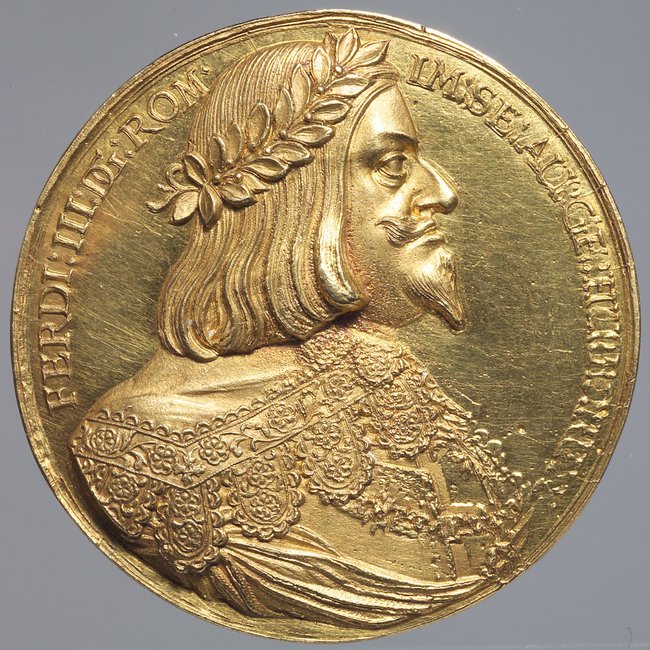Triumph in Vienna
Van Hoogstraten travelled to Rome via Vienna, where, soon after his arrival, he was granted an audience with Emperor Ferdinand III (1608-1657).1 It is well known – the story was told by Arnold Houbraken (1660-1719) – that Van Hoogstraten showed the emperor three paintings: a portrait of a nobleman, the crowning of Christ with a crown of thorns and a trompe l’oeil still life. Thus, Van Hoogstraten presented himself as an artist who was accomplished in portraiture, history painting and illusionism. The Habsburg monarch was deceived by the still life, possibly a depiction of a letter board [7]. By way of ‘punishment’ he retained this work. As a reward, the emperor presented Van Hoogstraten with a gold medallion of honour with his portrait on it [8]. Van Hoogstraten was to become famous for his trompe l’oeils (literally: ‘deceives the eye’), about which he later wrote that, although it is a simple concept, there is something lofty about it when ‘princes and princesses are deceived by it’.2 In 1652, he travelled on to Rome, where he joined a group of Dutch artists who called themselves the Bentveughels (Birds of a Feather) and was given the Bent nickname Batavier (Batavian).3 He subsequently spent some time with the imperial court in Regensburg, where the Reichstag was held at the time. Van Hoogstraten was in Vienna when his brother, Jan, succumbed to convulsions there in May 1654.4 Van Hoogstraten wrote letters to Dordrecht to keep his friends informed, and sent texts to be printed. In 1654, for instance, he wrote a play on the occasion of the wedding of Matthijs Pompe van Slingeland (1621-1679), who had been appointed bailiff of the province of South Holland the year before. In his Introduction, Van Hoogstraten noted that it was a great honour for a painter to be invited to the wedding banquet of the most distinguished people of his town.5 As a result of this printed tribute, Van Hoogstraten was still present in his absence and people did not forget him.

7
Samuel van Hoogstraten
Trompe l'oeil still life of a letter rack with a rosary and playing cards, 1651
Prague, Prague Castle Picture Gallery, inv./cat.nr. O /108

8
Medaillon with the Portrait of Emperor Ferdinand III, 1637-1657, gold,
4 cm diameter, Kunsthistorisches Museum, Münzkabinett, Vienna, inv. 976bß.
© KHM-Museumsverband
Notes
1 Maciesza/Runia 2025, pp. 58-59.
2 Van Hoogstraten/Brusati 2021, p. 256 (Van Hoogstraten 1678, p. 218): ‘Here the playful young painter quickly brings forth common things, colored according to life, and cut out, or with letters and combs, and honour if princes and princesses are deceived by it.'
3 Houbraken 1718-1721, vol. 2, p. 159.
4 Roscam Abbing/Schillemans 2025, chapter 2.
5 Van Hoogstraten/Brusati 2021 , p. 370 (Van Hoogstraten 1678, p. 353).

